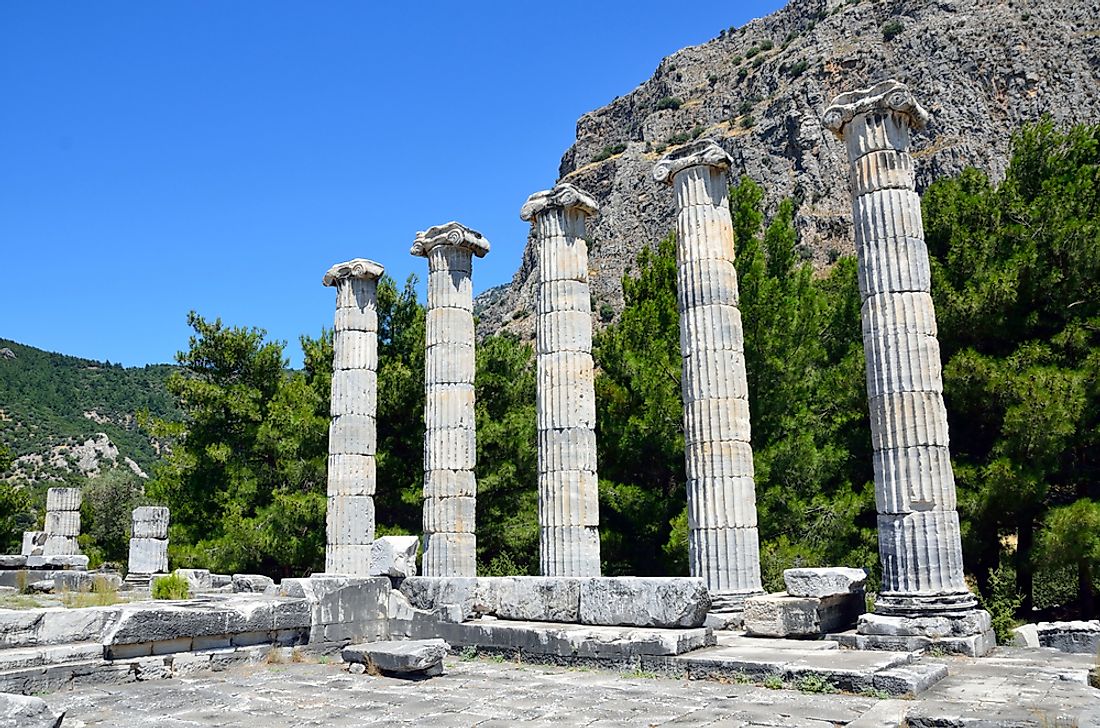What Is Capital In Architecture?

In architecture, capital is the topmost member of a column. Capital comes from the Latin word caput meaning head. It lies between a column and the load exerting force on a column. Capital helps broaden and enhance the supporting surface of a column. There are several capital designs such as convex, concave, and scrolling out design. Capital occupies a highly visible position in buildings. Due to its great visibility, capital serves as an ornamentation. It is the clearest indication of an architectural order. The details and the design of capital may help indicate a building's date. Some of the ancient capitals include:
Pre-classical Capitals
The ancient Egyptian capitals fall under the pre-classical capitals. Usually, the Egyptian capitals were made using papyrus and lotus plants. Palm trees also produced some great capitals. In the first to third century B.C, other river plants also came in handy to make capitals. During this time, the traditional lotus capital also underwent some enhancements.
Still under the pre-classical capitals, is the Achaemenid Persian capital. Its brackets bear the shapes of griffin, bull, or lion. The brackets feature heavy decorations and they project to the right and left to offer ample support for the architrave. The decorations beneath the capitals resemble the art of the many cultures conquered by the Persian Empire. Some of these cultures include Babylon, Egypt and Lydia. The decorations do not fulfill any architectural purpose but enhance the beauty of a building. Other pre-classical capitals include the Aegean capital (1600 BCE) in the frescoes at Knossos and the capitals found at the tomb of Agamemnon. The tomb is located in Mycenae and the capitals dates back to 1100 BCE.
Classical Capitals
Classical capitals come in different classical orders. These include Doric capital, Ionic capital, Corinthian capital, and Anta capital. Of all the classical capital orders, Doric capital is the simplest. This capital design was adopted in 700 BCE in the construction of the Temple of Apollo in Syracuse, Italy. The Ionic capital design was used in Ephesus (560 BCE) while constructing the temple of Artemis. Under this design, spiral volutes lie between the ovolo and the abacus. Ionic capital was also used much later in the temple of Athena Polias in the 19th century.
The Corinthian capital resembles leaves carved in two bands. It resembles a leafy cup inserted into another. The capital from Tholos of Epidaurus made in 400 BCE is one of the most beautiful Corinthian capitals. Anta capital, unlike other capitals, is not set on top of a column. Instead, it lies on top of the anta. Anta refers to a structural post joined to the frontal end of a wall. Usually, the upper edge of an anta has intense decorations. The sides of an anta capital can broaden upward giving it the shape of a couch. For this reason, anta capitals also go by the sofa capitals.
Indo-Corinthian Capitals
These are capitals with a strong Persian and Greek influence. The capitals have their roots in North Eastern India, in the Maurya Empire palaces. They are among the most beautiful Corinthian capitals and date back to the third and fourth centuries BC. The capitals provide an evidence of the early relations between India and the West.
Other significant capital designs include post-classical European capitals and the more recent Renaissance and post-renaissance capitals. With the continuous creativity and innovation in the architectural field, capital designs could only get better.











